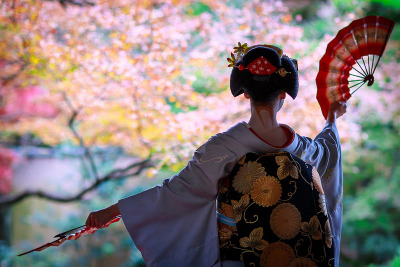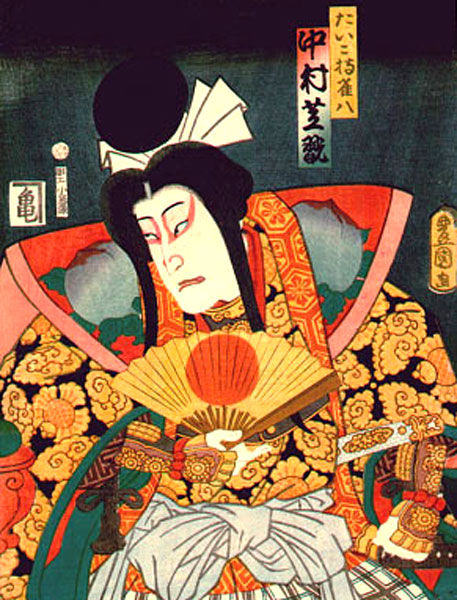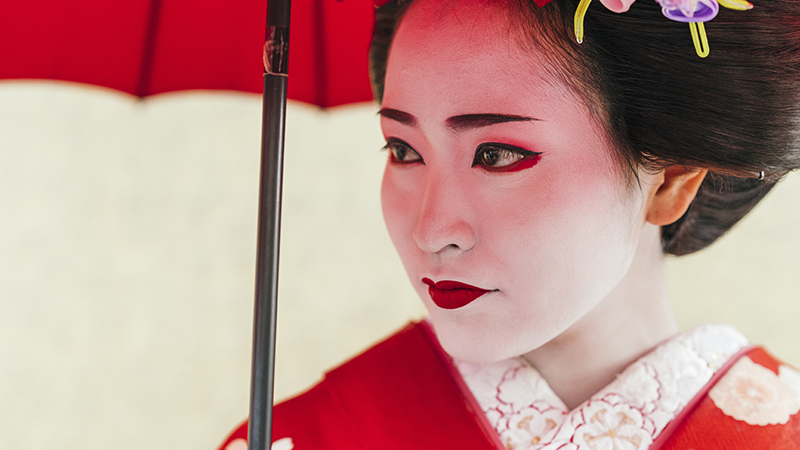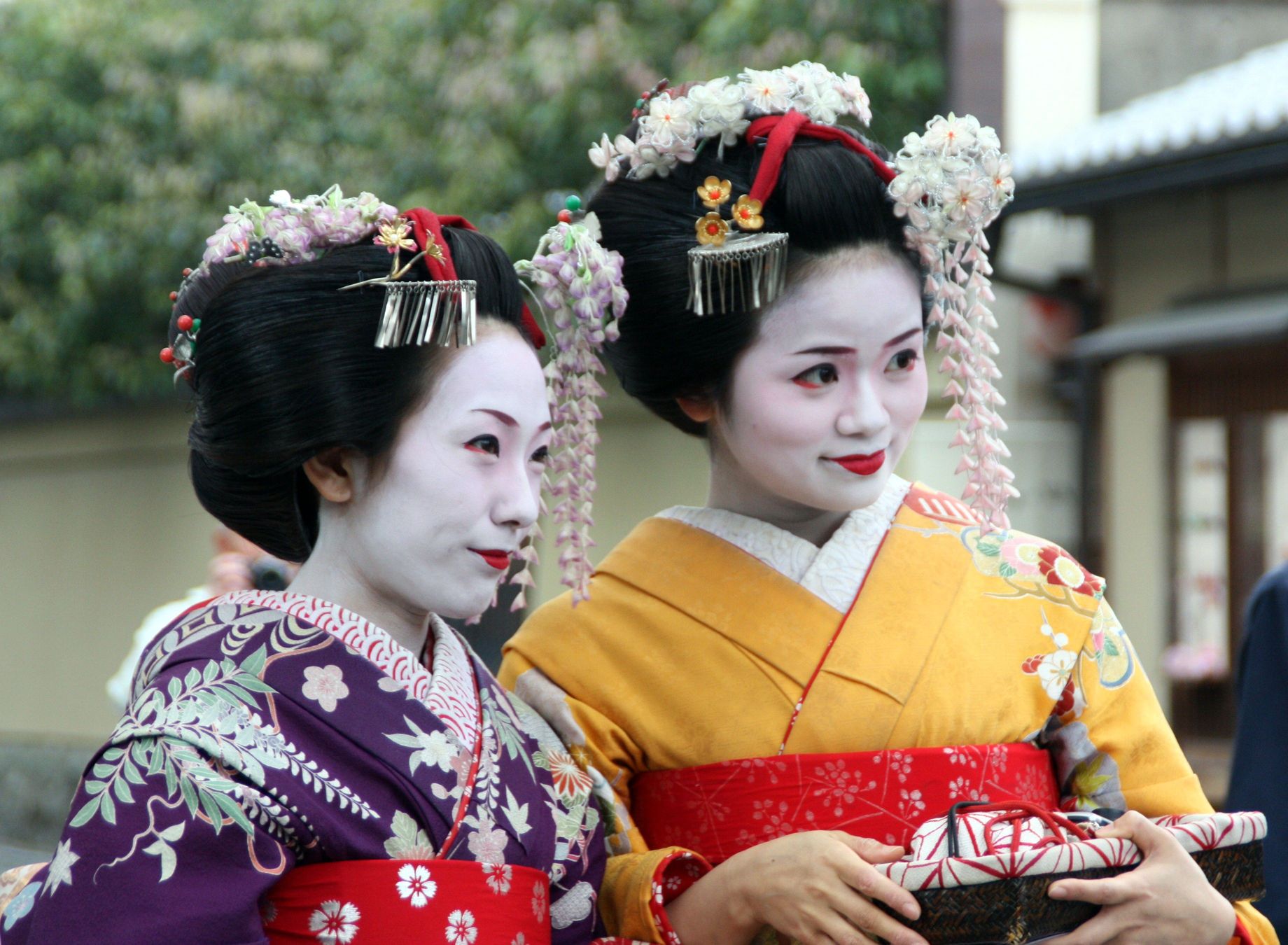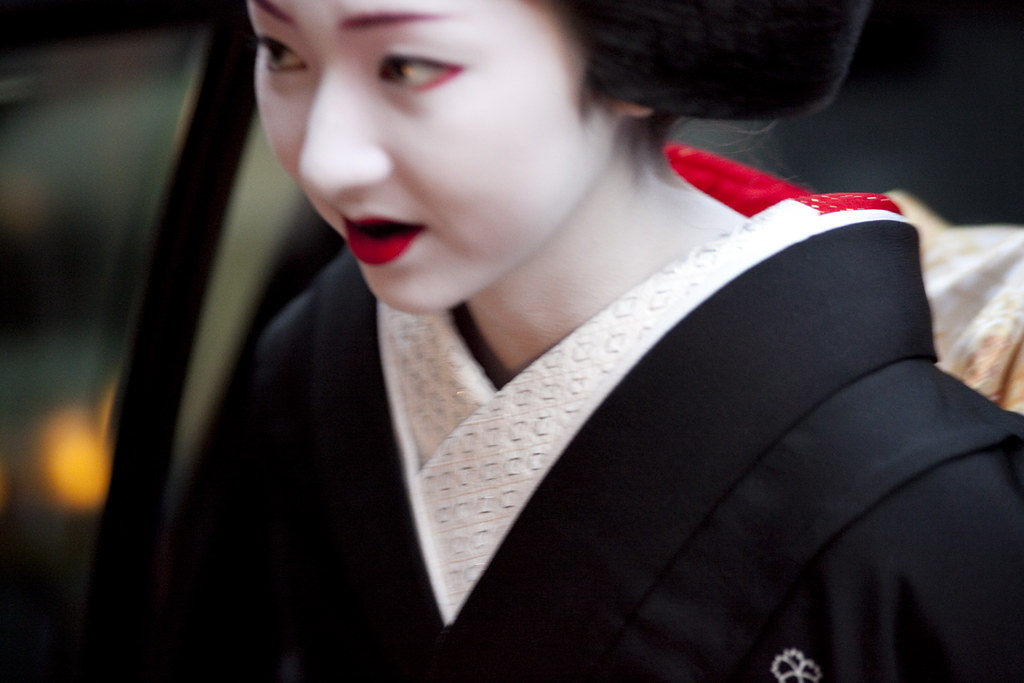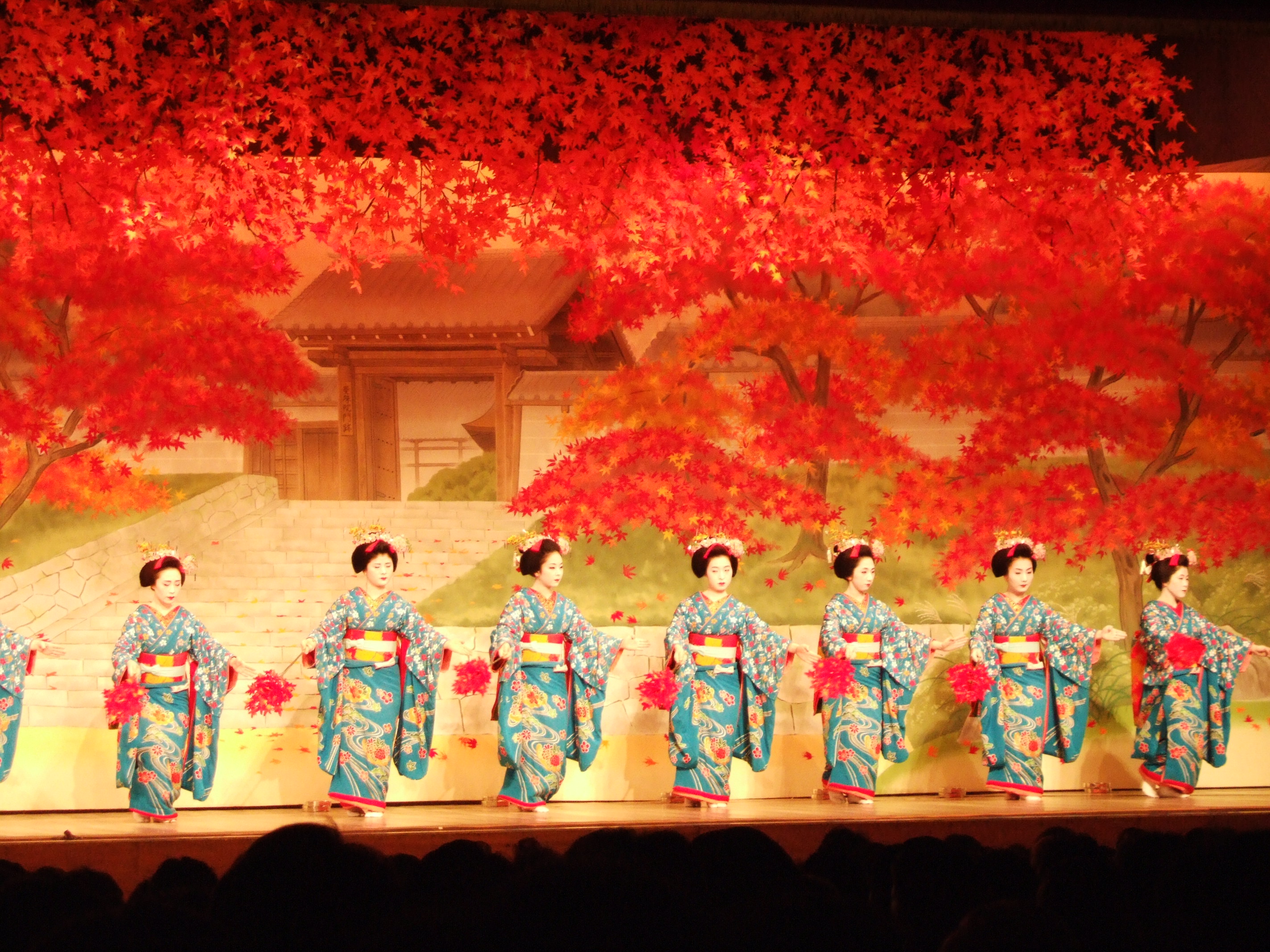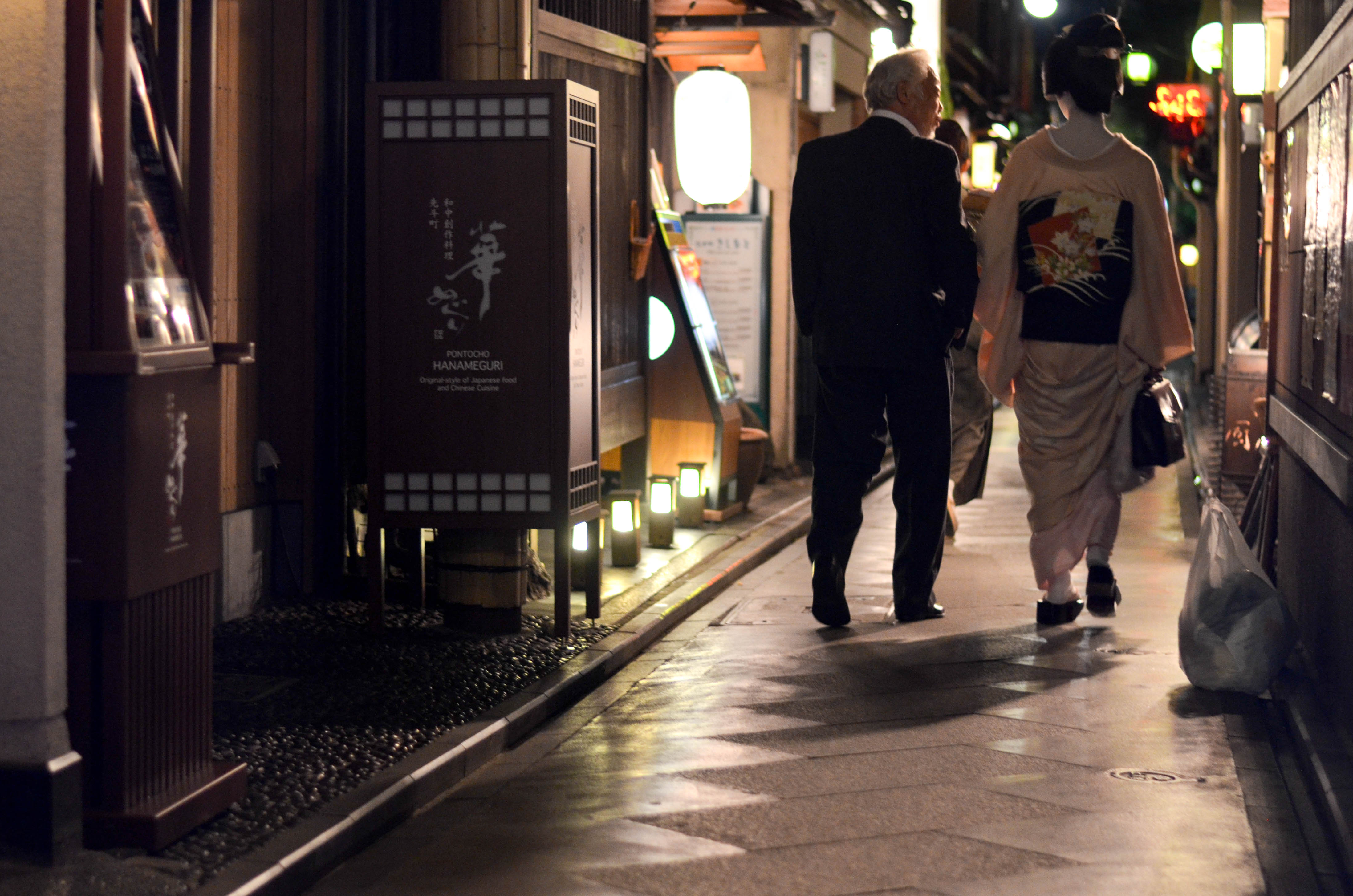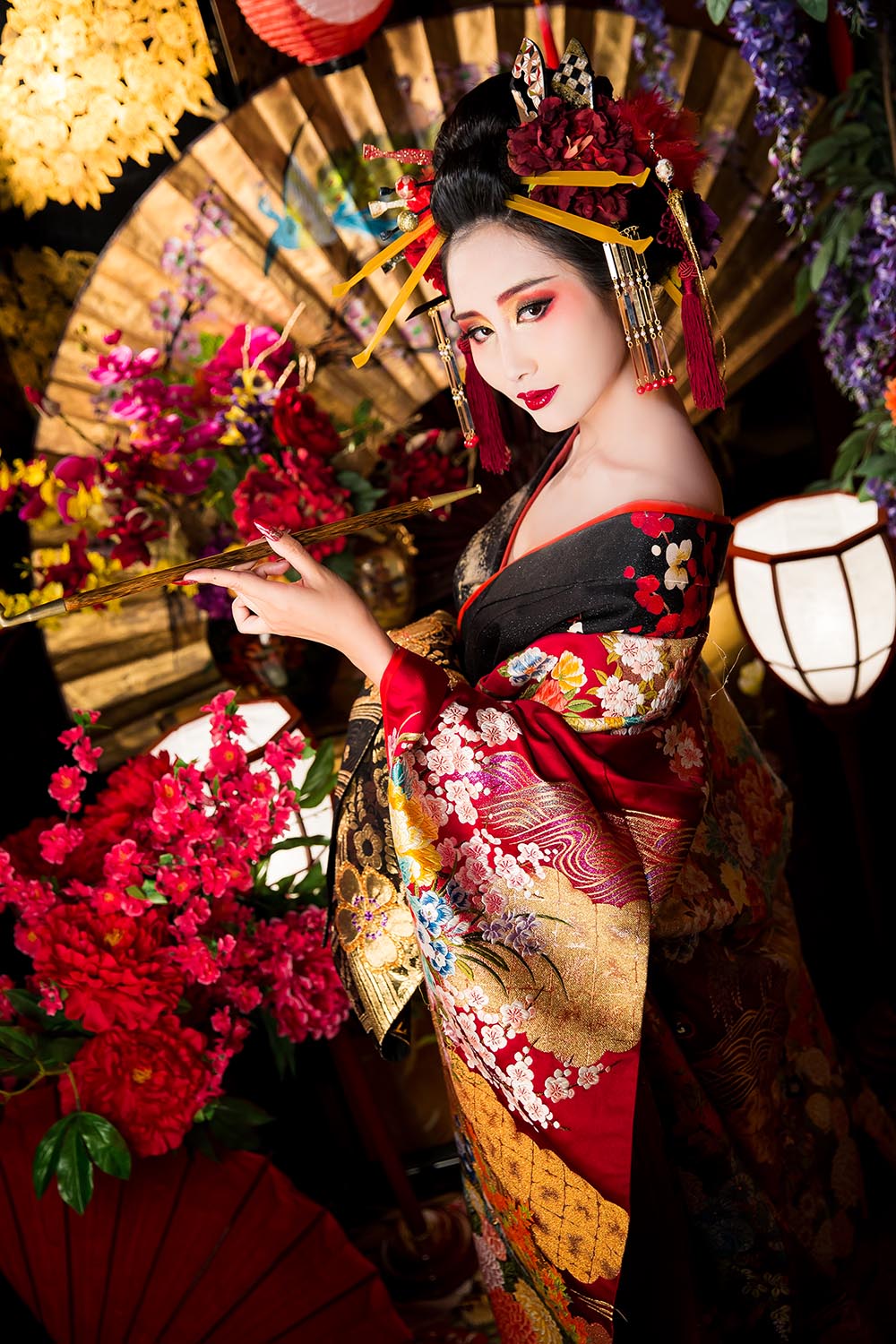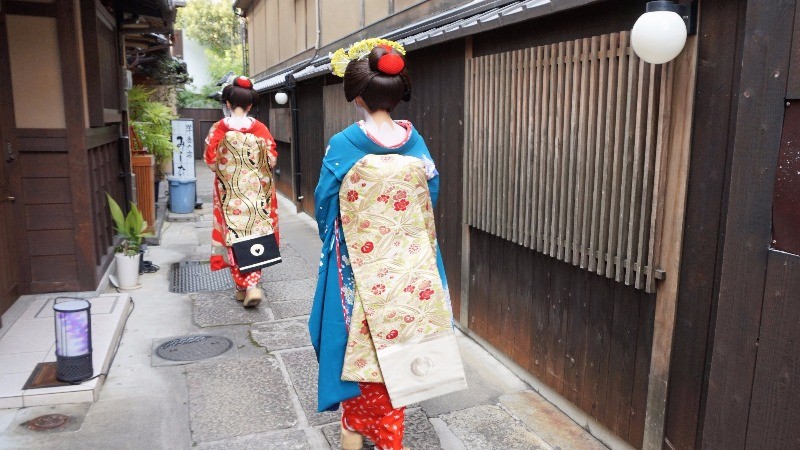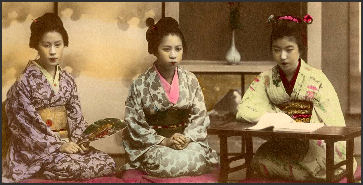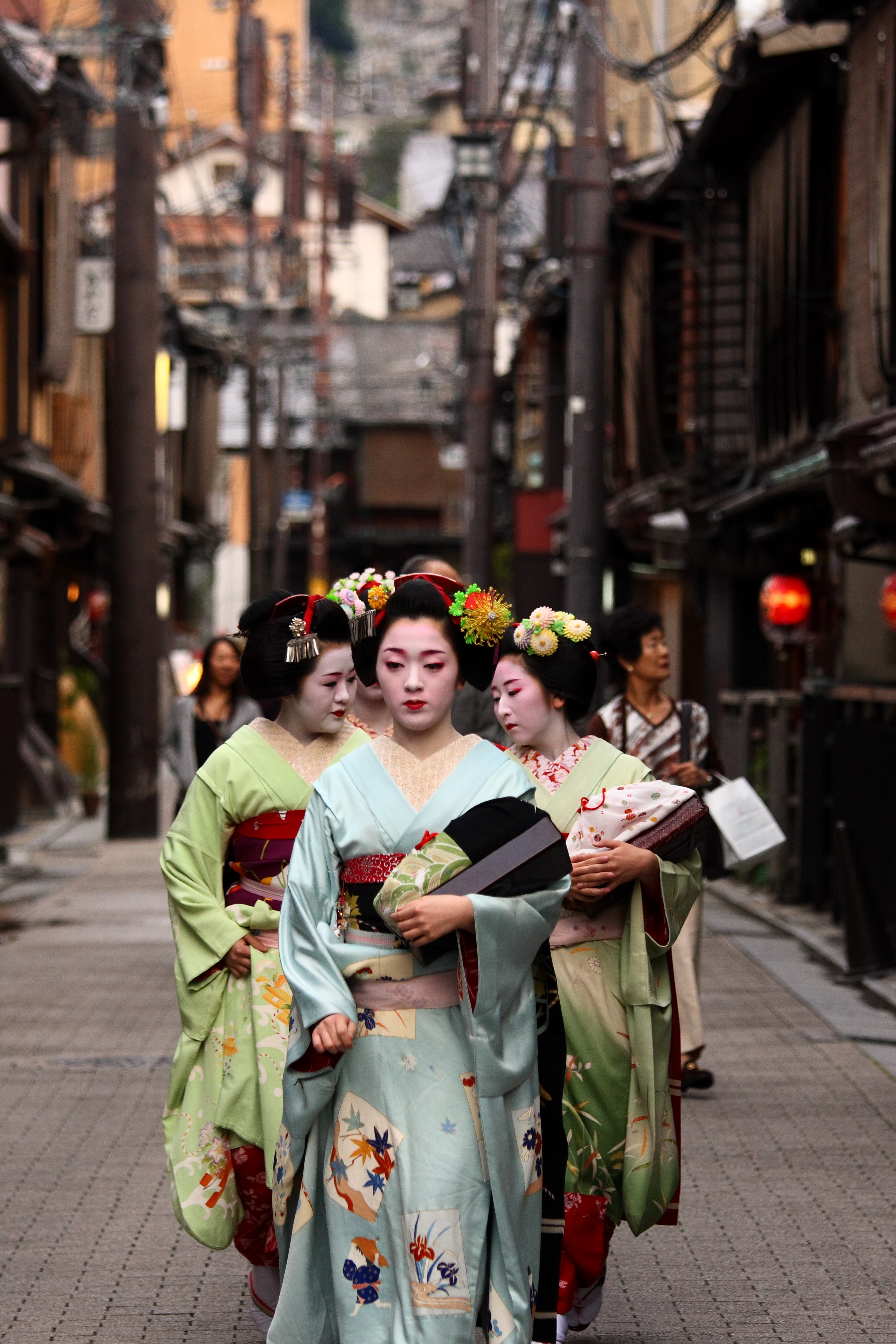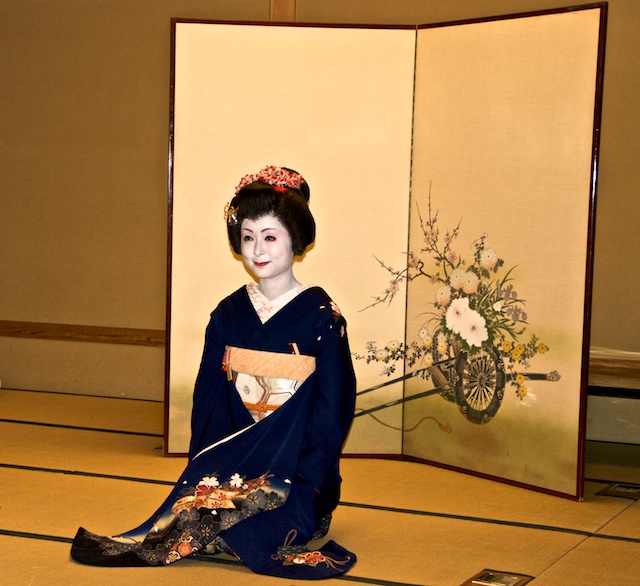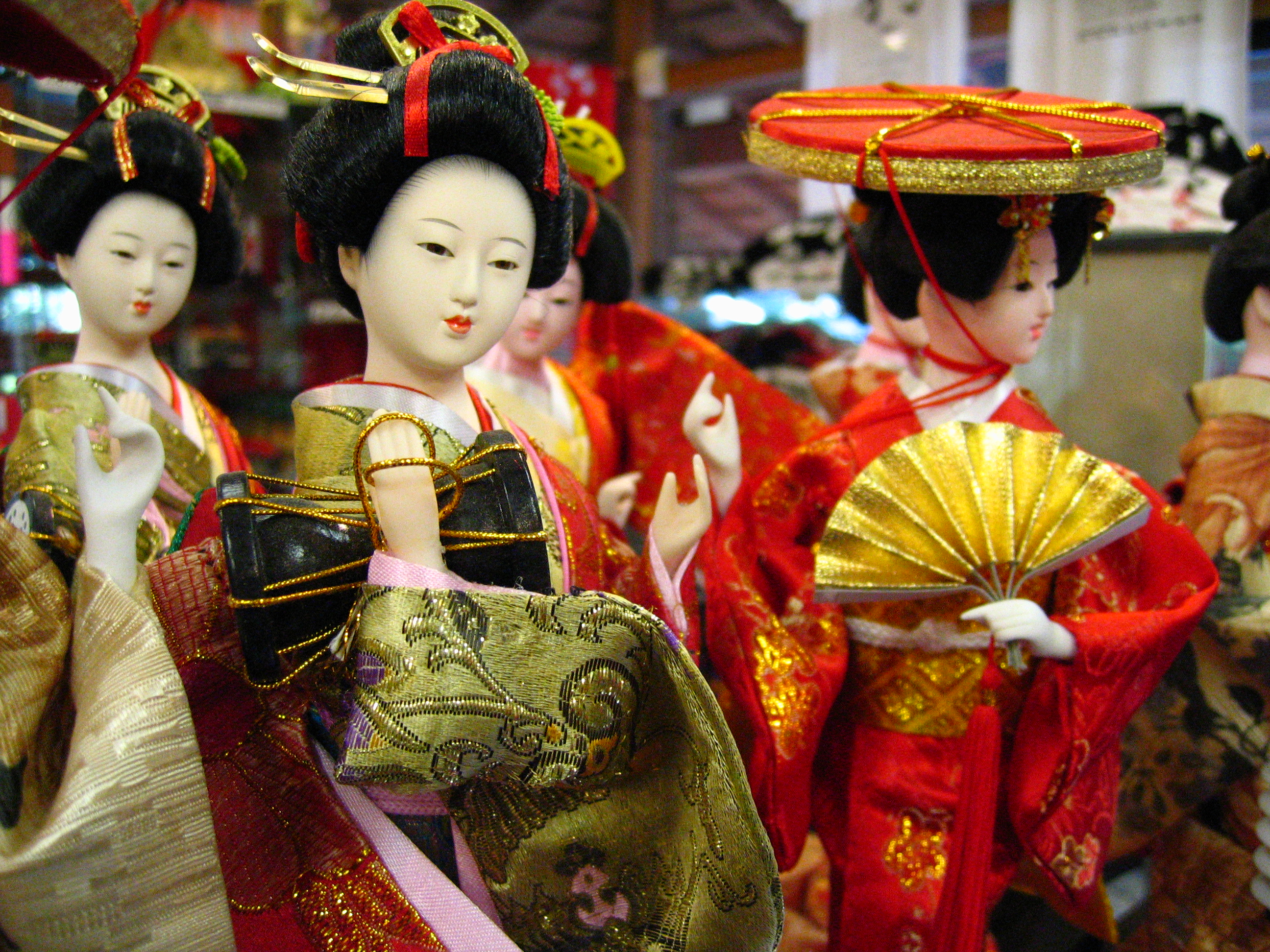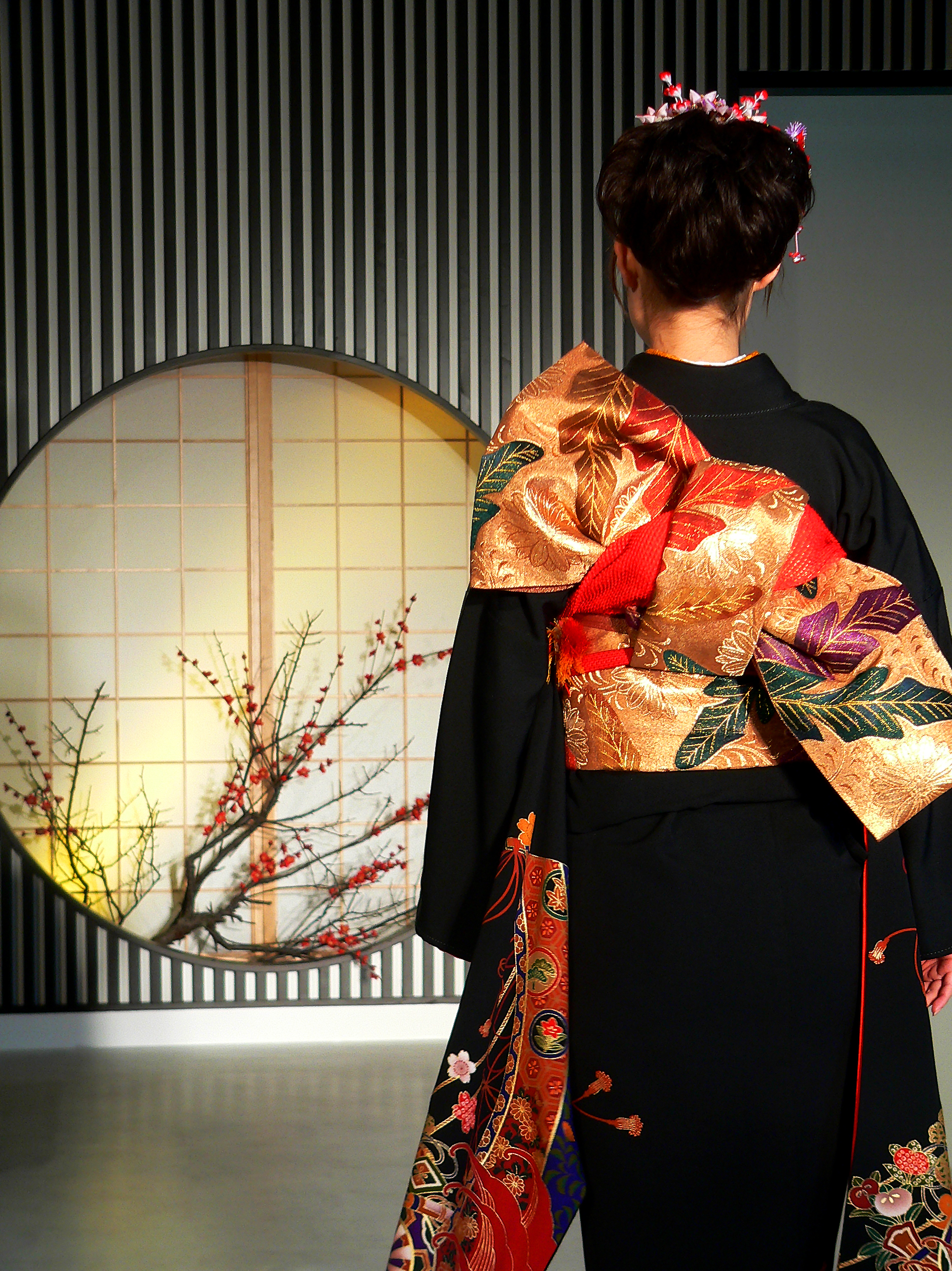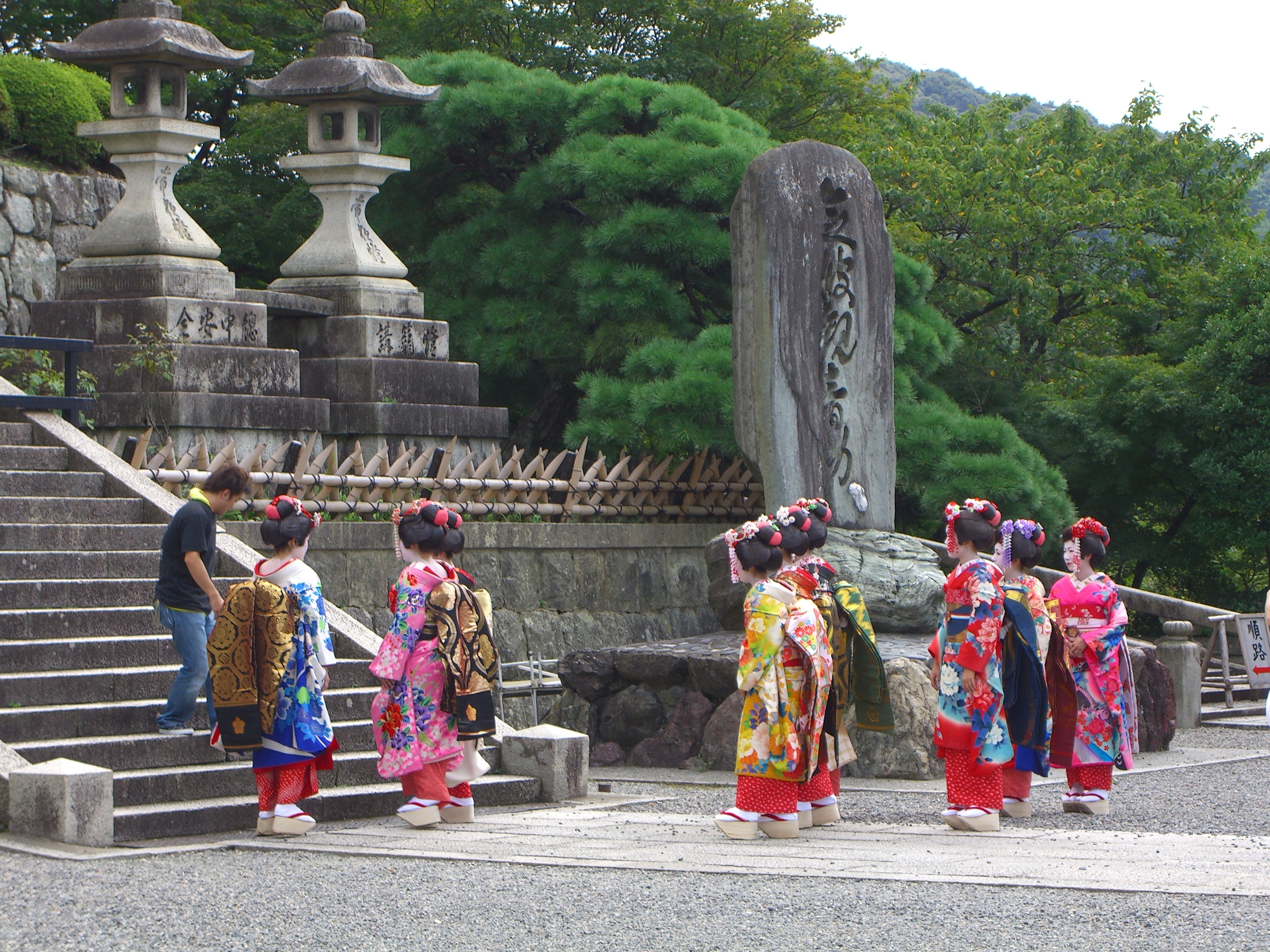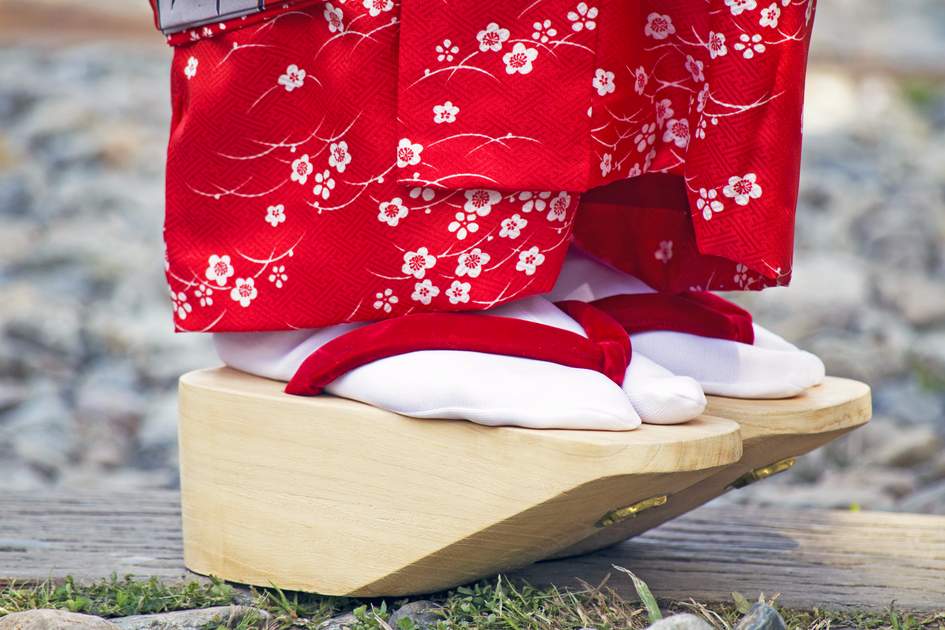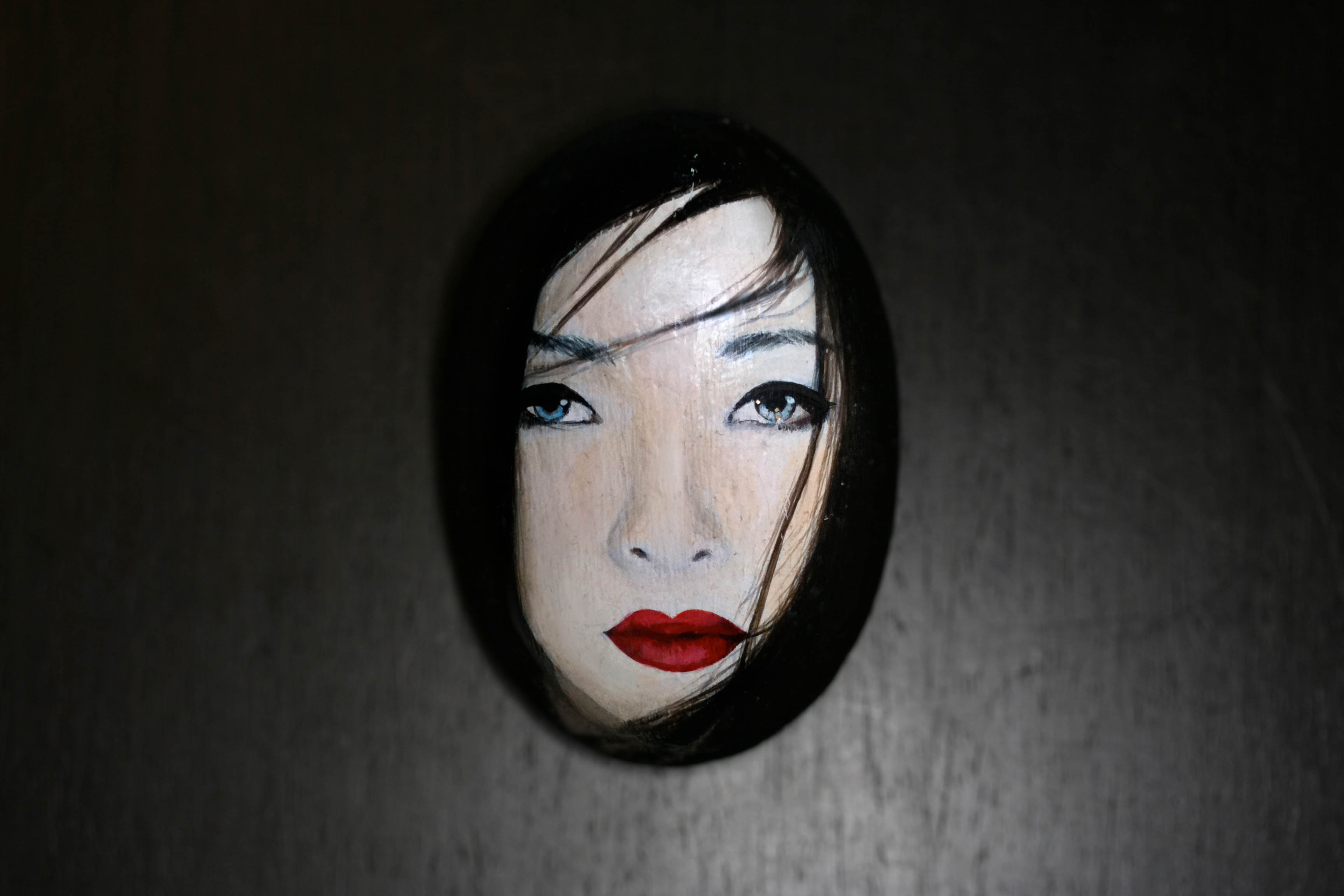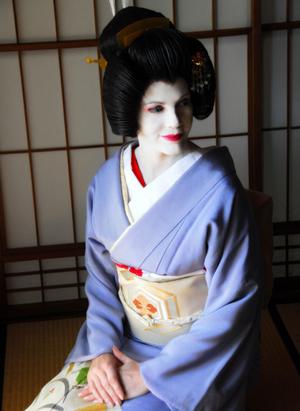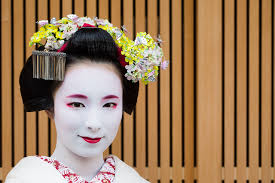The Geishas are one of the most famous and in fact, the oldest traditional beings of Japan. With they doll-like face that are painted to perfection, red rosy lips, and their superb kimonos, they prove to be the ultimate symbol of Japan’s traditional culture, elegance, and mannerism. Their profession, often misunderstood, is one of the oldest that’s running in Japan. It is equally mysterious too. No matter how hard you try, you can never truly unfurl the deepest secrets of the geisha world.
So here we are with this list that might help add to your own list of geisha facts. Take a look at these amazing 38 facts about geishas!

1. The Entertaining Girls

Geisha is equal to geiko or geigi. They are associated with ‘gei’ which stands for entertainment which is the sole purpose of their profession. It demands some abilities and concepts. The three are also different in the fact that ‘sha’ means a person, ‘ko’ refers to a chalid, while ‘gi’ implies to a someone who assists at a feast with classical Japanese music or singing.
Source: trulytokyo.com, Gif: Giphy
2. Male Geisha Existed Before
It was in the Edo era of Japan when geisha was referred to a houkan and geiko to a woman. The houkan’s job was entertaining people through her skills and by keeping geiko and maiko in assistance. As soon as Meji era arrived, the term geisha stood exclusively for women.
Source: similarworlds.com, Image: Flickr
3. Names for the Trainees
Maiko is also a geisha who is responsible for entertaining the guests with their skills in the traditional Japanese dance, ohayashi. They further train and practice in dance and music to become a geisha.
Source: japan-culture-tours.com
4. Wearing Oshiroi
Oshiroi is the white powder that is emblematic of the geisha look. It is used to cover the face of a geisha including her neck. Earlier, one of its ingredients was lead, which was hazardous to health and was therefore discontinued. It is discontinued once a geiko gets older. The look of the entertainer is completed using black eyeliner, red eye shadow, and red lipstick.
Source: thehealthy.com, Image: Flickr
5. Black Teeth Custom
The black teeth custom was actually a trend that was not exclusive to the geisha but was used by women in general. It was termed as ohaguro. The meaning of it has evolved over the years. So while in the previous days teeth were blackened for beauty purpose, now, it is done when a maiko is graduated or in Japanese terms, when she reaches the sakkou stage.
Source: trulytokyo.com, Image: Flickr
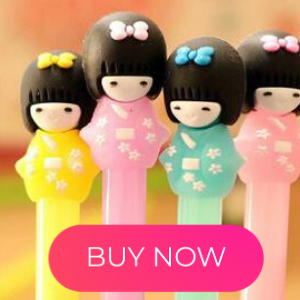
6. Strict Performance Rules
You can call geishas in a Ryotei, which is a high society restaurant which offers large banquet halls. The whole arrangement is decided according to the budget and the desire of the guests. In case you have some sort of influence in the society, you can call a geisha directly. There are very strict rules when it comes to calling a geisha for performances.
Source: trulytokyo.com, Image: Flickr
7. Having Patrons is Normal
Geishas can have their own patrons who are called danna. They are powerful and with a lot of money who pay for all the expenses for a geisha. It is a life long duty that a danna has to comply with. It is, therefore, rather a matter of high social order to be a danna. It showed the power and wealth of a man. However, the relationship between them is not necessarily sexual.
Source: people.howstuffwork.com, Image: Flickr
8. Confused with Sex Workers
Geishas have been confused with sex workers a lot of times. The Japanese term for them is oiran. Whereas it is true that some of them did eventually got engaged in sexual practices, most of them were still entertainers.
Source: allthatsinteresting.com, Image: Flickr
9. Serving Tea

It is not the duty of a geisha to serve green tea but of Maiko. Green tea is called dango. A maiko usually has to serve the tea wearing the traditional Japanese kimonos. It is often practiced at Ume matsuri.
Source: trulytokyo.com, Gif: Giphy
10. Certain Level Of Education
To be a geisha, you need to be highly educated especially in Japanese tradition and culture. She needs a education for at least a few years before she can be an actual geisha. She must work hard to achieve her goals if she truly wants her. A girl under 16 years of age can become a maiko where she has to learn to sing, dance and entertain in the traditional Japanese way. Other skills include playing the instrument, participating in tea ceremonies, flower arrangement and wearing the kimono. The age of 21 is the perfect age for a maiko to be graduated to a geisha.
Source: insidejapantours.com, Image: Flickr
11. No Marriage for Geisha
When a Geisha is in her profession and serving as an entertainer, it is compulsory that she doesn’t get married. She can, however, get married after she retires.
Source: trulytokyo.com
12. They Live in Flower Town
The place where a geisha lives is called Hanamachi which translates to the flower town, Hana – Flower and Machi – Town. Most of the hanamachi are now found in Tokyo and Kyoto. The separate residential areas for them are instrumental in attracting many visitors and customers. The house where they live is called Okiya which is a traditional style house made the Japanese way.
Source: trulytokyo.com, Image: Flickr
13. Born a Geisha
Geishas in the earlier times did not choose this profession by choice. They were either born out of a geisha mother or were from poor families who were in need of money. However, the present scenario has been changed. The geisha girls need to be educated in a school till 15 years of age and after that, they can apply to become a geisha.
Source: theguardian.com, Image: Flickr
14. Varied Hairstyles
A geisha and a maiko can be differentiated by their hairstyles. Unlike geisha, who wear special wigs called katsura, a maiko uses their own hair but can use hair extensions. To protect their updo between visits to the hairdresser, they sleep on special support called a takamakura. A maiko will also wear more elaborate ornaments in their hair, while those of a geisha is subtler. Some maiko develop bald spots from wearing these hairstyles for long periods of time, but they consider it to be a point of pride
Source: japanpowered.com, Image: Flickr
15. Half-Jewel
A geisha apprentice is also referred to as a hangyoku which translates to half-jewel. In the past, a hangyoku would be paid half as much as a fully-trained geisha
Source: theculturetrip.com
16. How Early Can They Begin?

Once upon a time, a geisha could start training as young as three or five years old, but in modern times, that no longer happens. Most apprentices train for a full year before becoming full geishas regardless of their age. If a woman is 20 or older when they start training they are generally not given the title of maiko, but they are still required to train for a minimum of 12 months before they can become full geishas.
Source: factsanddetails.com, Gif: Giphy
17. The Receding Numbers
In the heyday of geishas around the 1930s, there were as many as 80,000 women who were maikos and geishas. Over time, that number has dwindled, and there are only around 1,000 remaining active geishas.
Source: newworldencyclopedia.com
18. PayScale According to Style
Among geishas, there are different levels of pay and a different style to match each level- ohanadai, gyokudai, and senkoudai. Dai is Japanese for the price, and then ohana means flower, gyoku is a sphere or jewel, and senkou means incense.
Source: japanikuiku.blogspot.com, Image: Flickr
19. Internet and Cellphone Prohibited

While in training, a geisha is prohibited from using a cell phone or email and watches TV rarely. A maiko also works all but two days a month and is only able to see friends and family a few times a year on special occasions.
Source: trulytokyo.com, Gif: Giphy

20. Special Permission to Enter
A person is typically not allowed to enter an okiya off the street. To gain permission to enter, they must be referred by another client, or have a rapport with the proprietress. A foreigner was also not allowed to enter unaccompanied, but those restrictions have loosened somewhat in modern times.
Source: trulytokyo.com
21. No Time to Relax
Even when a geisha is at home and off-duty, she is never completely free to relax. A geisha is expected to maintain proper manners at all times and to set an example for younger geishas.
Source: japantoday.com, Image: Flickr
22. At Par with Men
A geisha traditionally does not behave in a meek or submissive manner. They needed to be up-to-date on current affairs and be able to hold clever and engaging conversations with their clients. At a time when many Japanese wives were not allowed to speak to their husbands as equals, geishas could converse on a wide number of topics and speak to them at the same level.
Source: japantoday.com
23. A 3 Year Wait
A geisha’s kimono takes up to three years to manufacture and is her biggest expense. The formal kimono is entirely made of silk and has a low-dipped neckline to show off the back of the neck, which is considered to be extremely sensual. The rest of the time, their kimonos are more understated.
Source: theguardian.com, Image: Flickr
24. The Silken Knot
To complete the look of the kimono, geishas tie a long piece of silk around their waists called an obi. The obi measures 4 meters (about 13.2 feet) long and is elaborately decorated. A professional dresser known as the kitsuke helps the geisha with her kimono and ties the obi knot in the back. A maiko’s obi is 5 meters (16.4 feet) long and is often more elaborately decorated than that of the geisha.
Source: theguardian.com, Image: Flickr
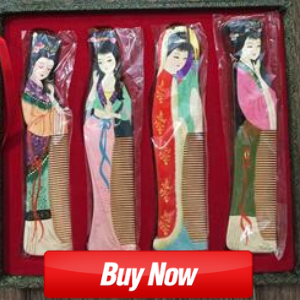
25. A Women’s Business
Even back in the early days of geishas, the geisha houses were run by women and without interference from men. Once their debt to the mother was paid, a geisha was free to branch out on her own and keep most of her wages outside of her sponsorship fees.
Source: theindependent.co.uk, Image: Flickr
26. Registration Office for Geisha
The first use of the word geisha was in 1750 by a female performer from the Fukigawa region, but these performers were usually considered to be courtesans. To separate geishas and courtesans/prostitutes, the Kemban was created in 1779. The Kemban is a registration office for geishas, and by 1813, geisha was officially recognized as a profession and the geisha name came into proper use.
Source: trulytokyo.com
27. Why’s it Dying Out?
Even today, dinner with a geisha is an extremely expensive evening and can cost about 80,000 yen—about $750US. Many modern Japanese men are forgoing the expense to seek out cheaper forms of entertainment and as a result, the geisha tradition is in danger of disappearing.
Source: jpninfo.com
28. The Idea of Perfect

The entire image of the geisha is crafted to embody the Japanese ideal of the perfect woman. She is beautiful and cultured and resembles a doll. For the most part, she is like a work of art—there to look at and admire but not to touch. According to Jodi Cobb in her National Geographic article about geishas, “Her business is to sell a dream—of luxury, romance, and exclusivity—to the wealthiest and most powerful men in Japan”.
Source: thephotosociety.org, Gif: Giphy
29. Today’s Superstars
Geishas in the 19th century were the equivalent of modern-day movie stars or supermodels. The best-known geishas earned a large amount of money and were trend-setters in fashion and culture. This was a far cry from the typical life of a Japanese woman at the time where they were mostly either wives or prostitutes.
Source: trulytokyo.com
30. Sibling Bond
All geishas are required to have a mentor known as a onee-san. The girls are bonded together as sisters in a ceremony called a san kudo. In the ceremony, cups of sake are passed between them and shared to symbolize the union which lasts for life. It is a key ritual in geisha culture.
Source: trulytokyo.com
31. Are Given a Name
Geishas do not use their real names professionally. They choose a special name which combines an element of their big sister’s name, and fashion and fortune. The name is then used to bring luck and good fortune to her house.
Source: issendai.com
32. Special Geisha Sandals
A geisha wears special sandals called geta. These sandals are made from wood and have a special wooden base similar to platform shoes which keeps the base of the Kimono from dragging in the dirt.
Source: trulytokyo.com, Image: Flickr

33. Instrument for Geishas

A shamisen is a Japanese string instrument that was introduced into geisha culture in the 18th century. The instrument has 3 strings and resembles a small-bodied guitar. The strings are plucked with a big wooden pick called a bachi. Today, it is the most famous of the geisha Instruments and the most difficult to perfect.
Source: wikivisually.com, Gif: Giphy
34. Popular geisha Dance

A geisha also learns to perform a dance called the shimai. It is performed as a solo dance in a Kabuki Theatre but without costumes and masks. The dance is accompanied by traditional Japanese music and contains disciplined and controlled movements similar to tai-chi. Each gesture of the dance tells a story and has meaning.
Source: wikivisually.com, Gif: Giphy
35. Geisha in Fiction
When Arthur Golden released his novel Memoirs of a Geisha in 1997, it was supposedly based on the real-life of geisha Mineko Iwasaki. Iwasaki later regretted speaking with Golden and claimed that he not only violated her privacy in revealing her identity but that he presents a number of false facts in the book. She released her own book Geisha: A Life in 2002 to set the record straight.
Source: trulytokyo.com, Image: Flickr
36. First Western Geisha
Traditionally, only Japanese women were allowed to become geisha, but in 1976, Liza Dalby became the first Western woman to debut as a geisha. She first learned about geisha on a trip to Japan in her teens, and later returned to the country as a graduate student to research a Ph.D. on geisha culture. Though she had never intended to become a geisha herself, she was eventually invited to join a small geisha community in Kyoto, and later became known as the “blue-eyed geisha.”
Source: trelegraph.co.uk, Image: Flickr
37. Geisha Graduation

When a maiko graduates to becoming a full geisha, she goes through a ceremony called an eriage which means “changing of the collar”. In the ceremony, she exchanges the red patterned collar of her kimono for a solid white one. This symbolizes her debut as a geisha, and she is then able to start entertaining on her own.
Source: people.howstuffworks.com, Gif: Giphy
38. Coming of Age
Until the practice was made illegal in 1959, as part of the maiko’s coming of age ceremony, her patron had the right to take the maiko’s virginity. During the ceremony, the top-knot of her hair was symbolically cut, indicating that she was ready to come of age. After the ceremony, there would be a party for the maiko. The mizuage was considered to be an important rite of passage for maikos, and the money received for her virginity would help promote her debut as a geisha.
Source: jap3.com, Image: Flickr

